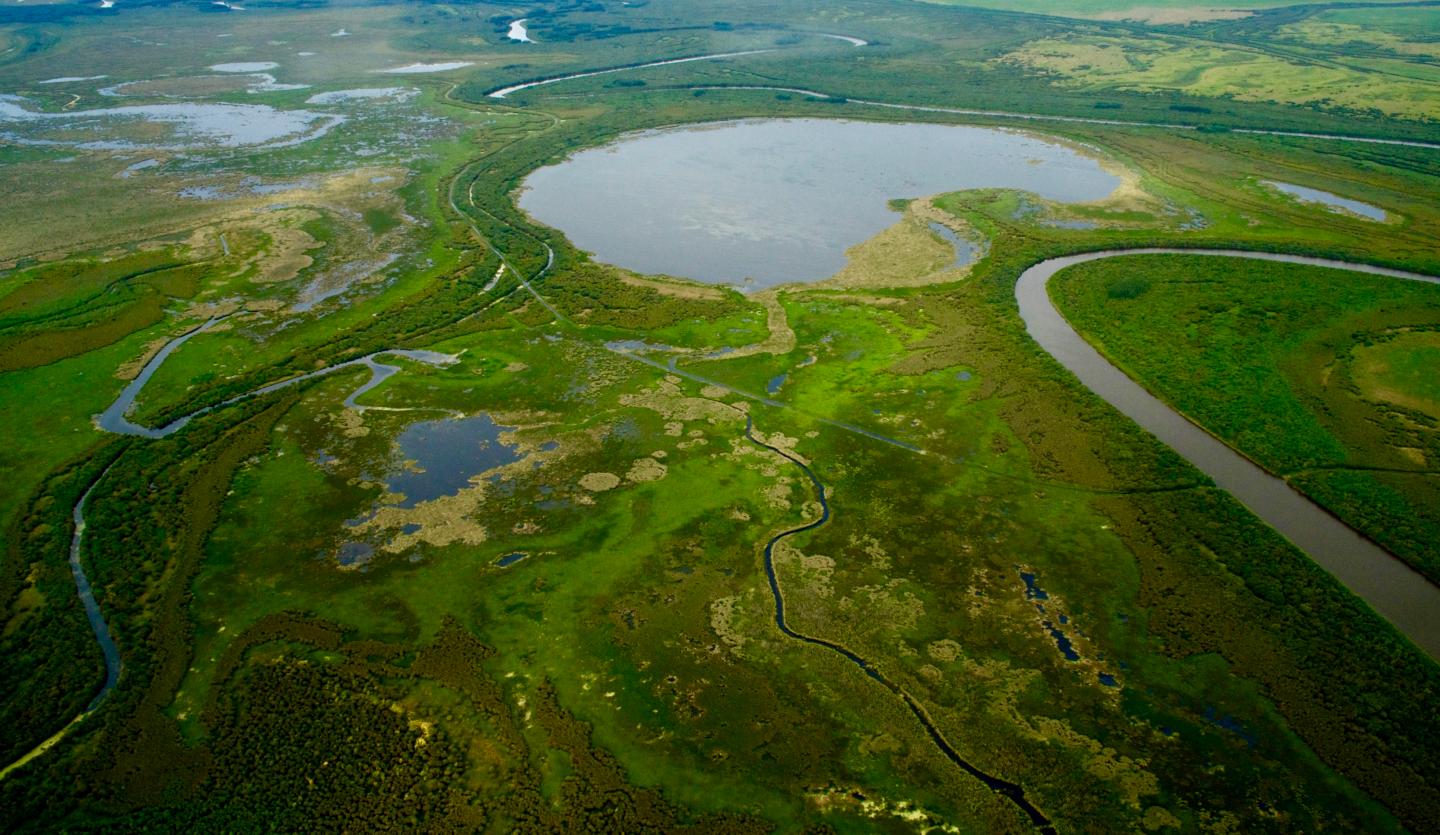
Credit: Donald Baird
The ability to accurately detect changes in ecosystem biodiversity caused by human activity has long challenged environmental scientists and ecologists, but a new study, published in PNAS, has established new DNA-based methods that are effective for environmental assessment and monitoring.
Led by researchers from Environment and Climate Change Canada’s Water Science and Technology Directorate and the Hajibabaei Lab at the University of Guelph, the study focused on at-risk wetlands in the Peace-Athabasca Delta (PAD) located in northern Alberta, Canada. The PAD is a large inland wetland complex threatened by encroachment from oil sands mining in the Athabasca watershed and hydroelectric dams in the Peace watershed.
“For more than a decade, we have been working closely with scientists from Environment and Climate Change Canada to develop and apply high-throughput DNA based biodiversity analysis for monitoring key ecosystems across Canada,” said Dr. Mehrdad Hajibabaei, a co-author of the study, and a professor in the Department of Integrative Biology at the University of Guelph. “This study is a key contribution from this collaborative effort to bring cutting-edge genomics to ecological analyses.”
Aquatic macroinvertebrates were sampled between 2011 and 2016 across a gradient of wetland flood frequency, applying both microscope-based morphological identification and DNA metabarcoding — a method first introduced by Hajibabaei Lab in 2011. DNA metabarcoding involves sequencing environmental DNA (eDNA) to identify many organisms within the same environmental sample. By using multispecies occupancy models (MSOMS) — a model used to assess biodiversity through species richness and interactions — the study found that DNA metabarcoding detected a much broader range of biodiversity per sample compared to traditional morphological identification and was essential to identifying significant responses to flood and thermal regimes.
“By using massively parallel sequencing and advanced computational analysis, DNA metabarcoding overcomes critical chokepoints in biomonitoring,” said Hajibabaei. “It allows processing large number of samples without the need of separating and sorting tiny larvae. It uses sequences from the DNA barcoding gene to make taxonomic identification often at a better resolution than achievable by morphological examination.”
The study demonstrates that family-level occupancy masks high variation among genera and quantify the bias of barcoding primers on the probability of detection in a natural community. It also revealed that patters of community assembly were nearly random, suggesting a strong role of randomness in the dynamics of the metacommunity.
“Until now, our ability to make consistent and accurate identifications of the hundreds of species which comprise these hyper-diverse and dynamic communities has limited our ability to make broad statements about how resource developments are degrading critical goods and services needed by migratory birds and wildlife,” said Dr. Donald Baird, federal scientist with Environment and Climate Change Canada. “These impacts can have knock-on consequences for local communities who rely on these critical habitats for food security,” said Baird, who co-authored the study and is actively involved in monitoring wetlands in Alberta’s oil sands region.
Simulations used in the study also demonstrated that metabarcoding was much more efficient, especially in a more precise taxonomic resolution, and provided the statistical strength required to detect change on a broader, landscape-level scale.
“Being able to demonstrate DNA metabarcoding as an effective tool in ecological analyses across space and time, and in critical ecosystems such as the Peace-Athabasca Delta, is an important stepping-stone for broader application of this approach,” said Hajibabaei.
Hajibabaei is currently applying the study’s DNA metabarcoding approaches to assess key watersheds across Canada in a new program called STREAM. Launched last year in partnership with World Wildlife Fund-Canada, Living Lakes Canada, Environment and Climate Change Canada, STREAM is establishing a nationwide network of community-based biomonitoring programs.
###
Media Contact
Mehrdad Hajibabaei
[email protected]
Original Source
https:/
Related Journal Article
http://dx.





